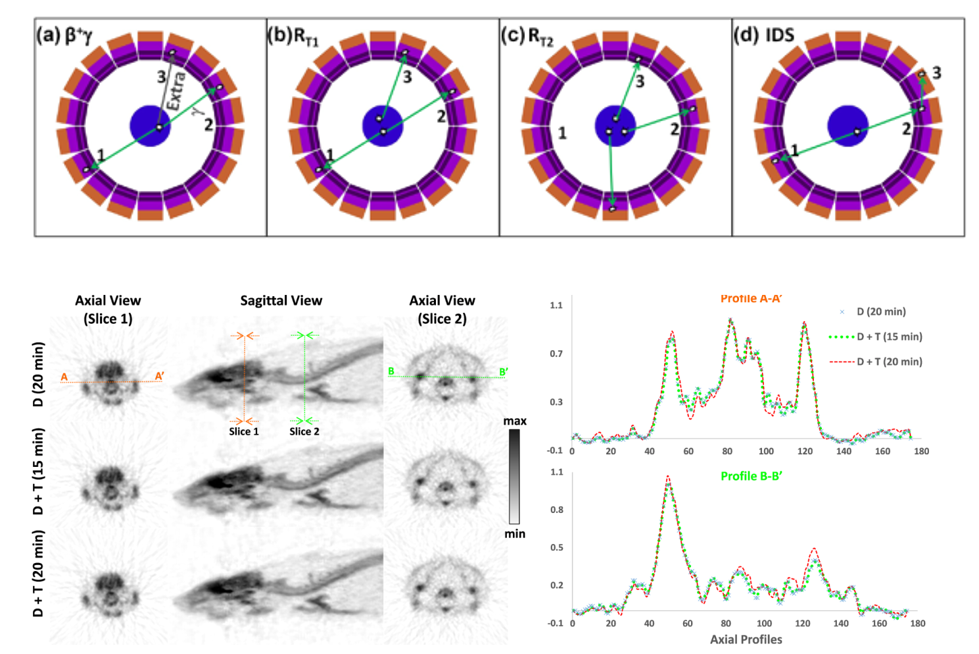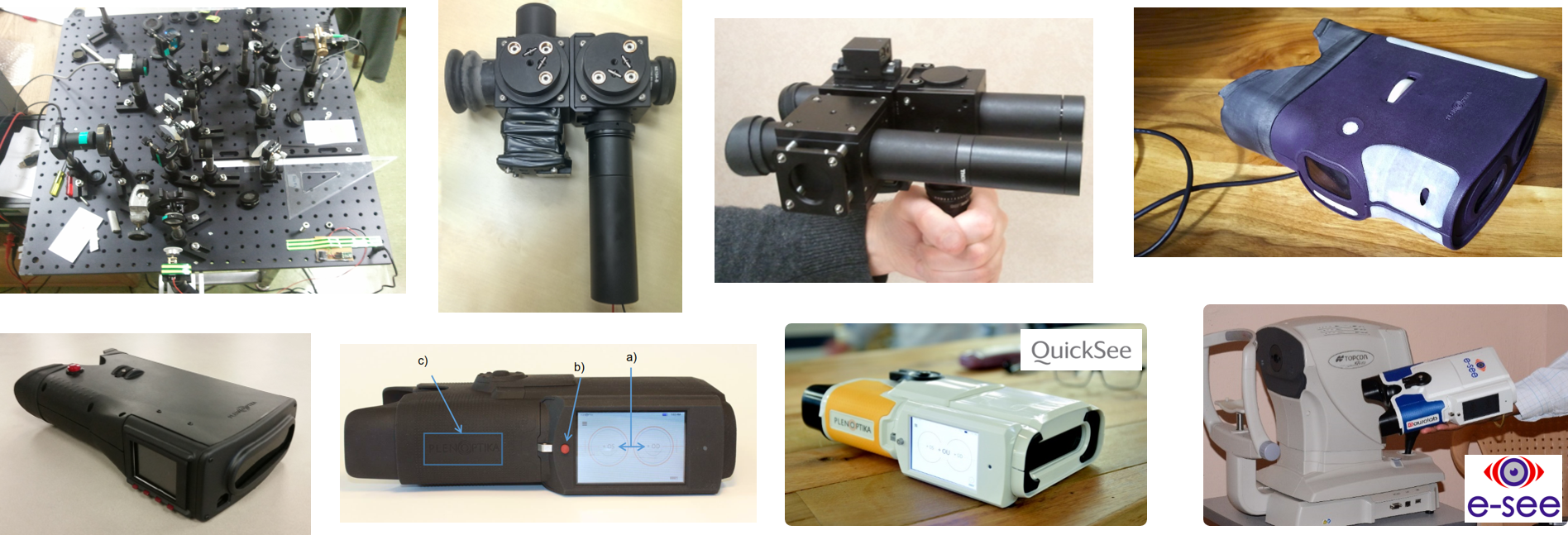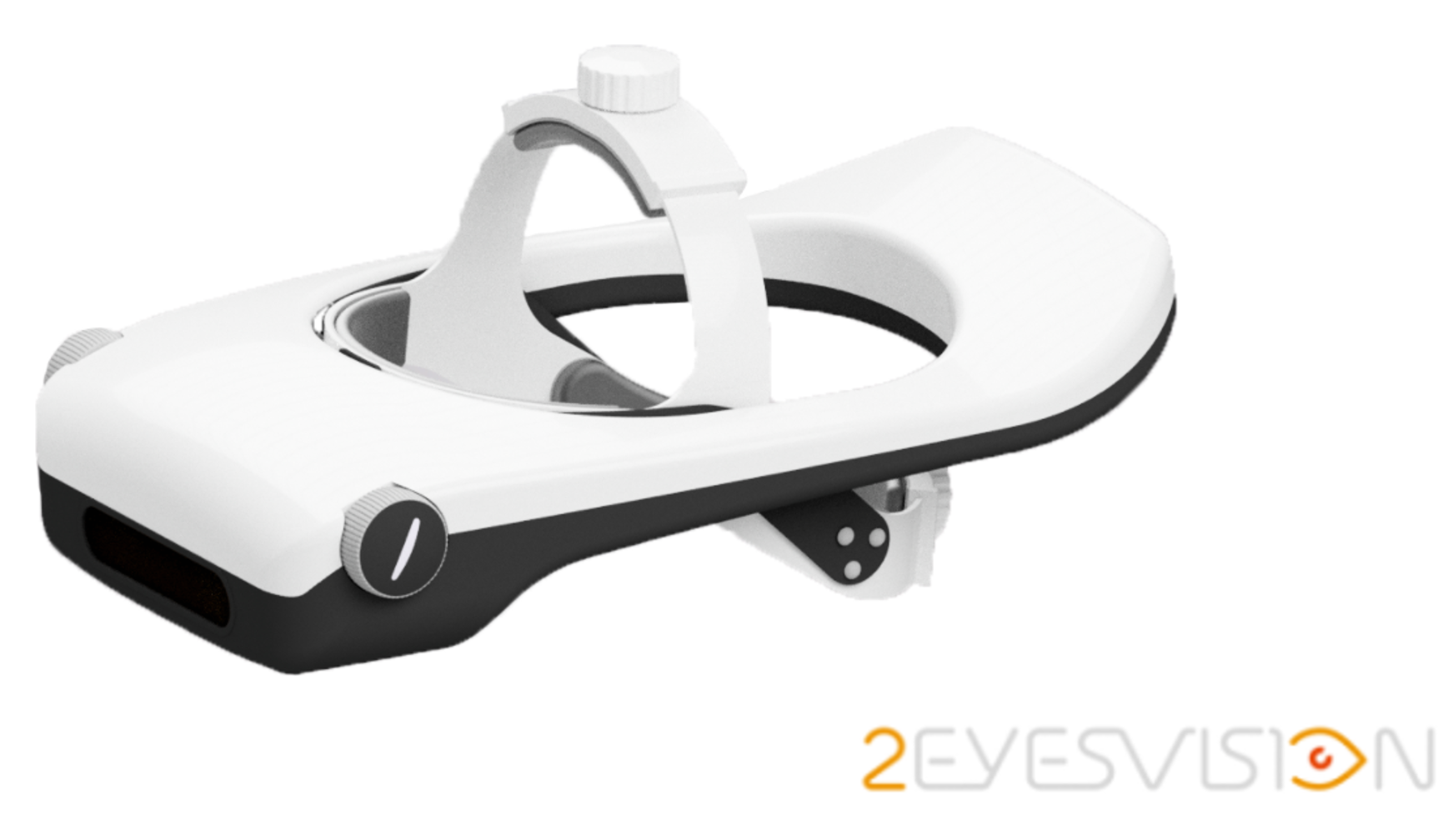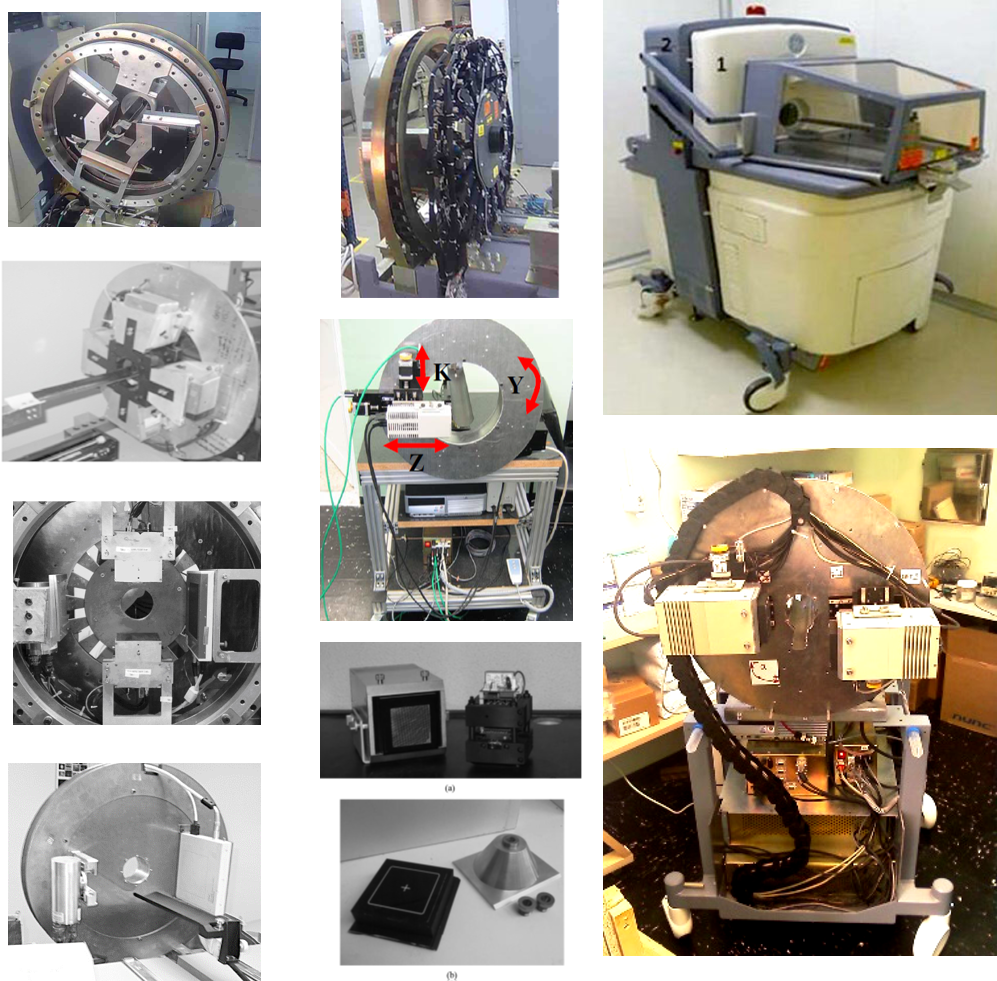Molecular Imaging
Multiplexed PET Imaging
Related work
- E. Lage, Joaquin L. Herraiz, V. Parot. “Multiplexable Emission tomography” PCT/US2013/038846
- D. Garrido, E. Lage, M. Papisov, A. Santos, M.A. Lessa, S Weise, C. Kosour, J.G. Venegas, J.L. Herraiz. "Multiplexed dynamic PET imaging of the lungs based on triple coincidences" 2017 ISBI Conference (Australia)
- L. Herraiz, F. Mulero, V. Parot, S. Dave, S. Moore, J.M. Udias, J.J. Vaquero, E. Lage. “mPET: Herramienta innovadora para imagen PET multitrazador” 34 Congreso de la Sociedad Española de Medicina Nuclear e Imagen Molecular 2014
- L. Herraiz, E. Lage, J.G. Venegas. “Simultaneous PET imaging of Liquid Abpsortion and Mucociliary transport in the Lungs based on Triple coincidences” IEEE Nuclear Science Symposium and Medical Imaging Conference, 2016
- L. Herraiz, S.C. Moore, M.A. Park, J.M. Udias, J.J. Vaquero, E. Lage. “Image Quality Assessment of Multiplexed PET” IEEE Nuclear Science Symposium & Medical Imaging Conference, 2015
- L. Herraiz, S.C. Moore, M. Cervo, S. Espana, J. Ruiz-Cabello, E. Lage. “Multiplexed PET in Clinical Scanners based on Triple coincidences”. IEEE Nuclear Science Symposium & Medical Imaging Conference, 2014
- V.Parot, J.L. Herraiz, S. R. Dave, J.M. Udias, S.C. Moore, M. Park, J.J. Vaquero, E. Lage. “A new approach for multiplexed PET imaging” IEEE Nuclear Science Symposium & Medical Imaging Conference, 2013
- L. Herraiz, E. Lage, V. Parot, S.R. Dave, J.M. Udias, J.J. Vaquero, L. M. Fraile. “Production of positron-gamma emitters for multiplexed PET (mPET) imaging” IEEE Nuclear Science Symposium & Medical Imaging Conference, 2013
Triple coincidence imaging in PET

Triple coincidences in positron emission tomography (PET) are events in which three γ-rays are detected simultaneously. These events, potentially useful for enhancing the sensitivity of PET scanners, are discarded or processed without special consideration in current systems because there is not a clear criterion for assigning them to a unique line-of-response (LOR). We have developed several novel strategies to use these type of events in PET including multiplexed PET imaging, enhance the sensitivity of the scanner or improve image quality when using non-standard positron emitting radionuclides.
Related work
- E. Lage, V. Parot, S.C. Moore, A. Sitek, J.M. Udias, S.R. Dave, M. Park, J.J. Vaquero, J.L. Herraiz. “Recovery and Normalization of triple coincidences in PET” Medical Physics 42, 1398 (2015)
- J. Cal-Gonzalez, E. Lage, E. Herranz, E. Vicente, J.M. Udias, S.R. Dave, V. Parot, J.L. Herraiz. "Simulation of triple coincidences in PET”. Physics in Medicine and Biology vol 60 (1), 2015
- E. Lage, Joaquin L. Herraiz, V. Parot, S.R. Dave, “Inter-detector scatter enhanced emission tomography” PCT/US2013/068858, Patent
- L. Herraiz, E. Lage, V. Parot, S.R. Dave. “System and Method to improve image quality of emission tomography when using advanced radionuclides” PCT/US2014/045220
- E. Lage, L. Herraiz, V. Parot, S.R. Dave. “Normalization correction for multiple-detection enhanced emission tomography” PCT/US2014/043826, Patent
- S.C. Moore, M. Cervo, S.D. Metzler, E. Lage, J.M. Udias, J.L. Herraiz. “Iterative demultiplexing of Multiple-Pinhole SPECT projection Data” IEEE Nuclear Science Symposium & Medical Imaging Conference, 2015
- L. Herraiz, S. C. Moore, V. Parot, S.R. Dave, M. Park, S. Yoo, W. Lee, H. Kim and E. Lage. “A prompt-gamma correction method for non-standard PET radionuclides base on the detection of triple coincidences” IEEE Nuclear Science Symposium & Medical Imaging Conference, 2014
- J. Cal-Gonzalez, E. Herranz, J.M. Udias, S.R. Dave, V. Parot, E. Lage, J.L. Herraiz. “Simulation of triple coincidences in PET” IEEE Nuclear Science Symposium & Medical Imaging Conference, 2013
- E. Lage, V. Parot, J.M. Udías, S.C. Moore, M. Park, J.J. Vaquero, A. Sitek, S.R. Dave, J.L. Herraiz. ”Recovery of muti-interaction photon events to improve the performance of PET scanners” IEEE Nuclear Science Symposium & Medical Imaging Conference, 2013
Small Animal Imaging Systems (PET/SPECT/CT)
Small animal imaging is an important tool in several disciplines such as drug development and translational cancer research. The most significant among the clear advantages of imaging is that functional information at molecular and cellular levels can be measured in an intact, living system. During his stage in the Medical Imaging Lab of the Gregorio Marañon Hospital (IISGM) Dr. Lage developed several of these systems including complete PET, PECT/CT and SPECT systems for rodent imaging.
Related links
- M. Abella, E. Vicente, A. Rodríguez-Ruano, S. Espana , E. Lage, M. Desco, J.M. Udias and J.J. Vaquero. “Misalignments calibration in small-animal PET scanners based on rotating planar detectors and parallel-beam geometry” Physics in Medicine and Biology, 57(22):7493-518, 2012
- A.L. Goertzen,Q. Bao,M. Bergeron, E. Blankemeyer, S. Blinder, M. Cañadas, A.F. Chatziioannou, K. Dinelle, E. Elhami, H.S. Jans, E. Lage, R. Lecomte, V. Sossi, S. Surti, Y.C. Tai, J.J. Vaquero, E. Vicente, D.A. Williams, R. Laforest.“NEMA NU 4-2008 Comparison of Preclinical PET Imaging Systems”. The Journal of Nuclear Medicine, 53:1–10, 2012
- M. Cañadas, M. Embid, E. Lage, M. Desco, J.J. Vaquero, J.M. Pérez. "NEMA NU 4-2008 performance measurements of two commercial small-animal PET scanners: ClearPET and rPET(1)". IEEE Transactions on Nuclear Science, 58(1): 58-65, 2011
- E. Lage, J.L. Villena, G. Tapias et al. “A SPECT Scanner for Rodent Imaging Based on Small-Area Gamma Cameras” IEEE Transactions on Nuclear Science, 57(5): 2524-2531, 2010
- M. Abella, J.J. Vaquero, M.L. Soto-Montenegro, E.Lage, M. Desco. "Sinogram bow-tie filtering in FBP PET reconstruction" Medical Physics, 36(5): 1663-1671, 2009
- E. Lage, J.J. Vaquero, A. Sisniega, et al. "Design and performance evaluation of a coplanar multimodality scanner for rodent imaging". Physics in Medicine and Biology, 54(18): 5427-5441, 2009
- J.J. Vaquero, S. Redondo, E. Lage et al. "Assessment of a New High-Performance Small-Animal X-Ray Tomograph" IEEE Transactions on Nuclear Science, 55(3): 898-905, 2008
- M. Abella, J.J. Vaquero, E. Vicente, J. Álvarez, E. Lage, M. Desco. "Effect of misalignments in small animal positron emission tomography scanners based on rotating planar detectors" AMI Conference 2006
- J.J. Vaquero, E. Lage, S. Redondo, M. Abella, E. Vicente, M. Desco. "Initial results of a positron emission tomography/computed tomography small-animal imaging device with co-planar geometry" AMI Conference 2006
- J. Pascau, J.J. Vaquero, M. Abella, R. Cacho, E. Lage, M. Desco. "Multimodality workstation for small animal image visualization and analysis" AMI Conference 2006
Medical Devices
Affordable wavefront refraction technology

There is a critical need for tools that increase the accessibility of eye care to address the most common cause of vision impairment: uncorrected refractive errors. Due to the global shortage of eye care professionals, it is often difficult, particularly in low-resource settings, to obtain accurate prescriptions for eyeglasses that would effectively correct refractive errors and restore good vision. At MEDIC we have developed together with PlenOptika Inc. (MA, USA) and Aurolab (India) an innovative device that addresses this massive problem by significantly simplifying and speeding up the refraction process for prescribing eyeglasses.
Related work
- N.J. Durr, S.R. Dave, F.A. Vera-Diaz, D. Lim, C. Dorronsoro, S. Marcos, F. Thorn, E. Lage. “Clinical Evaluation of a portable handheld wavefront Autorefractor” Optometry and Vision Science (OVS) 2015, 92(12) 1140-7
- N.J. Durr, S.R. Dave, E. Lage, S. Marcos, F. Thorn and D. Lim. “From unseen to seen: tackling the global burden of uncorrected refractive errors” Annual Reviews of Biomedical Engineering, Vol. 16: 131-153
- N.J. Durr, S.R. Dave, D. Lim, M. Sughanti, S. Bama, R. Mahadevan, S. Ravilla, J. Sanil, T. Ravilla, E. Lage. "Clinical validation of a novel wavefront autorefractor in a base hospital and vision center in rural India" Investigative Ophthalmology & Visual Science June 2017, Vol.58, 1139
- E. Lage, E. Garcia, S. Dave, M. Ramirez, L.M. Garcia, N. Alejandre-Alba, D. Lim, C. Dorronsoro, S. Marcos, N Durr. “Visual acuity evaluation with refractions prescribed by a novel low-cost wavefront aberrometer” ARVO 2015 Conference
- N.J. Durr, E. Lage, S.R. Dave, C. Dorronsoro, S. Marcos, D. Lim. “Apparatus and Method for determining an eye prescription” PCT/US2014/045261
- E. Lage, F. Vera-Diaz, S.R. Dave, D. Lim, C. Dorronsoro, F. Thorn, N. Durr. “Evaluation of a low-cost wavefront aberrometer for measuring refractive errors” ARVO 2014 Conference
- Plenoptika feature in MIT news Home page "http://news.mit.edu/2018/startup-plenoptika-vision-care-developing-world-0111" Jan 2018
Simultaneous Vision Simulation

SimVis will have a major clinical impact in the field of presbyopia corrections, as it holds potential to change the way these corrections are prescribed: This technology allows the patient for first time to experience the real world through multifocal corrections before surgery, so the patients can decide what correction will fit better their expectations before intra-ocular lens implantation. MEDIC is helping to develop this Technology in collaboration with the VioBio Lab (Instituto de Optica Daza de Valdes, CSIC, Spain) and the Spin-off Company 2EyesVision.
Related links
- C. Dorronsoro, X. Barcala, E. Gambra, V. Akondy, L. Sawides, Y. Marrakchi, V. Rodriguez-Lopez, C. Benedi-Garcia, M. Vinas, E. Lage and S. Marcos. "Tunable Lenses: dynamic characterization and fine-tuned control for high speed applications", Optics Express 2018 (in press)
- Yassine Marrackchi, “Development of electronics and firmware for a vision simulation device”, Bachelor Thesis, Director: E. Lage, Biomedical Engineering, Universidad Carlos III de Madrid, 2017
- Telemadrid News, “Madrid reconoce a los mejores 7 trabajos de ciencia y tecnologia”, "http://www.telemadrid.es/noticias/madrid/noticia/madrid-reconoce-los-7-mejores-trabajos-de-ciencia-y-tecnologia" , March 2018




